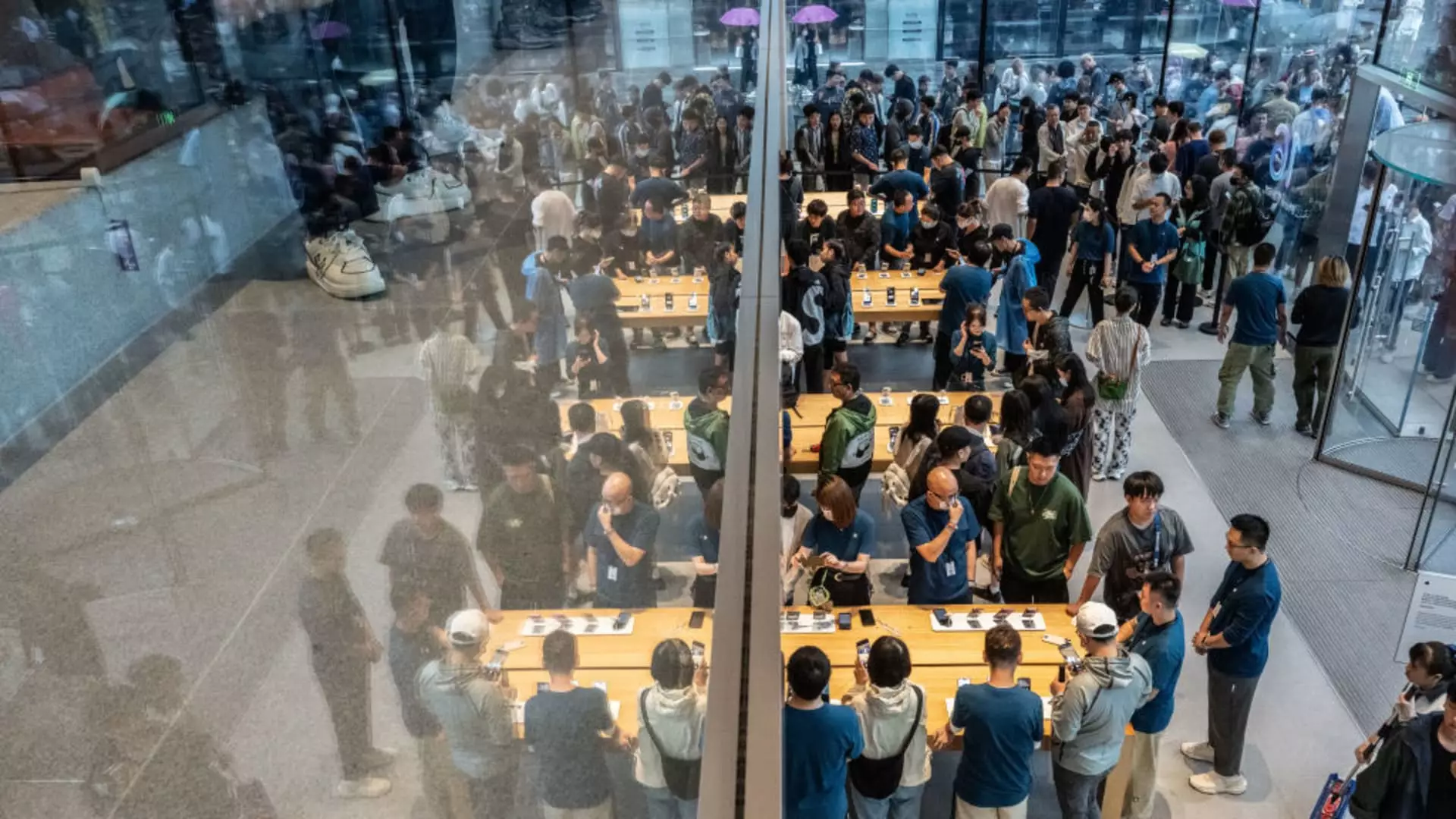In the rapidly evolving smartphone landscape of China, the competition between Apple and Huawei has reached unprecedented levels. Recent reports indicate that an increasing number of affluent Chinese consumers are weighing their options between Apple’s latest offerings, the iPhone 16 series, and Huawei’s ambitious trifold Mate XT. This trend highlights the shifting dynamics of consumer loyalty and market positioning in an environment characterized by intense brand rivalry and economic factors.
During a recent evaluation by CNBC, the interest expressed by potential buyers in both Apple and Huawei products was striking. Out of ten consumers surveyed, eight conveyed enthusiasm for both the new iPhone and Huawei’s Mate XT, showcasing a significant overlap in the customer bases of these two major brands. This illustrates a palpable shift in consumer sentiment where traditional loyalties are being challenged. During this analysis, five individuals were approached in each respective store during a weekday morning, reflecting a snapshot of the current marketplace.
Given the historic status of Huawei and the pressure it has faced from U.S. sanctions imposed since 2019, the company’s efforts to rebuild its smartphone segment have gained traction. In the second quarter, Huawei emerged as the fourth-largest brand in terms of smartphone market share in China, while Apple failed to secure a spot in the top five. This marks a significant milestone for domestic manufacturers, signifying a shift in consumer preferences toward homegrown brands.
When examining the economic dimensions of this competition, the price disparity is particularly striking. While the base model of the iPhone 16 starts at $799 and the Pro Max variant at $1,199, Huawei’s Mate XT commands a staggering starting price of over $2,800. The price differential is even more pronounced when scrutinizing secondhand marketplaces, where the Mate XT was reportedly selling for 50,000 to 60,000 yuan ($7,100 to $8,520), as opposed to the iPhone 16 Pro Max’s resale price of 10,500 to 16,300 yuan.
Such differences invariably influence consumer behavior and decision-making. For some, the allure of Huawei’s innovative trifold design may outweigh its hefty price tag, especially for tech-savvy users eager to explore new features. This highlights a market driven not only by brand loyalty but also by the desire for cutting-edge technology—a trait particularly prized among young, affluent consumers.
Apple’s highly synchronized launch strategies continue to attract significant crowds, as evidenced by early morning lines outside Apple stores in Beijing. The contrast is notable with Huawei’s launch, which, although it commenced with reserved deliveries of the Mate XT, drew a much smaller audience. In Beijing, the buzz surrounding the iPhone launch starkly contrasted the ho-hum response at Huawei locations—indicating differing levels of excitement and anticipation.
The launch strategies adopted by these two giants evoke questions about consumer engagement and brand positioning. Many early iPhone buyers articulated interest in the Huawei device, citing lack of novelty in Apple’s offerings as a reason for their interest. This sentiment raises critical questions about the longevity of Apple’s allure in a market increasingly dominated by local innovations and competitive pricing.
Consumers like Yang and Wang signify a noteworthy trend where loyalty to brands like Apple is becoming flexible. Yang, who uses an iPhone but is curious about Huawei’s offerings, reflects a mindset of exploration rather than blind loyalty. Meanwhile, prospective buyers are motivated by features rather than just brand names, an evolution that suggests the smartphone market may continue to change drastically in the face of challenging economic circumstances and a variety of consumer needs.
The competition between Apple and Huawei in China encapsulates broader themes in global markets—namely, the importance of adaptability, innovation, and understanding customer desires. As both brands strive to secure their position in a fast-paced environment, the coming months will likely reveal how these dynamics play out in sales figures, market strategies, and consumer brand allegiance. The tech landscape is shifting, and both giants must evolve or risk being overtaken by emerging players with powerful incentives to innovate and capture the market.

